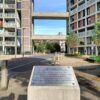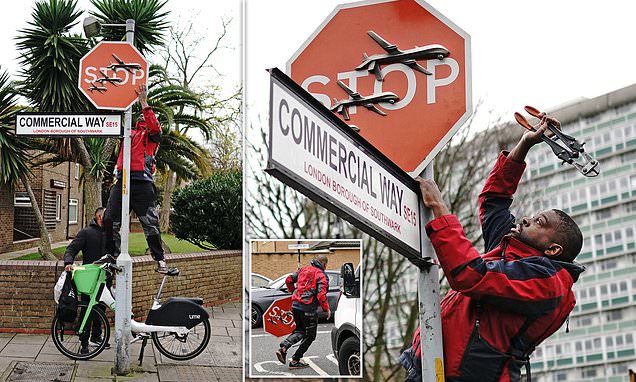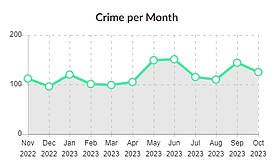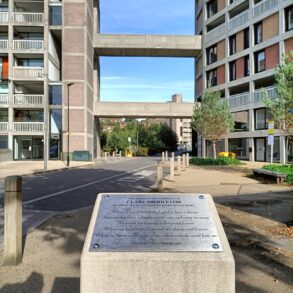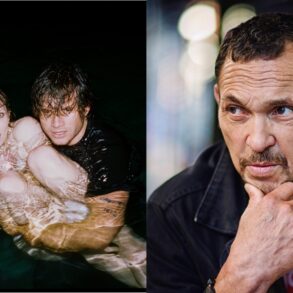- Do you know either of the men? Email rory.tingle@mailonline.co.uk
The Met Police have ruled out a probe after a brand new Banksy that experts are valuing at £250,000 was apparently stolen from a south London street today.
The force says that it is waiting for a formal report of a crime from the owner of the property before they try and track down the culprit, who took the sign away less than an hour after it was revealed to be genuine.
Pieces by the rogue artist have been sold for millions of pounds – and experts are already speculating that it could make hundreds of thousands amid speculation that it may have been taken for a quick profit.
Southwark Council, the local authority responsible for services in the area – including street signage – did not respond to a request for comment.
Ian Syer co founder of MyArtBroker told MailOnline: ‘Street installations by Banksy are typically hard to sell due to usually having to remove entire walls of buildings.
‘But these chaps had it away in minutes but they’d be lucky to get £250k for it, if a buyer ever came forward.
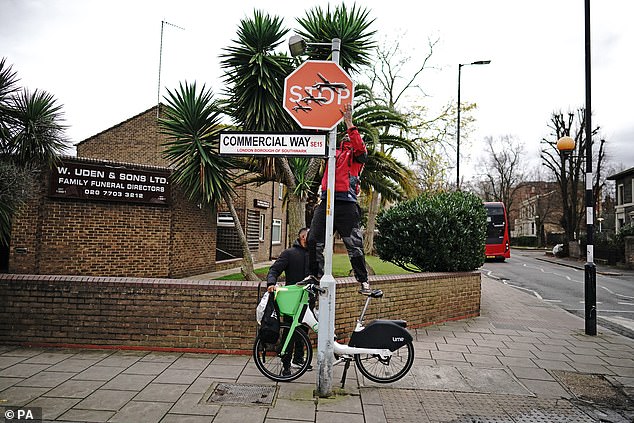

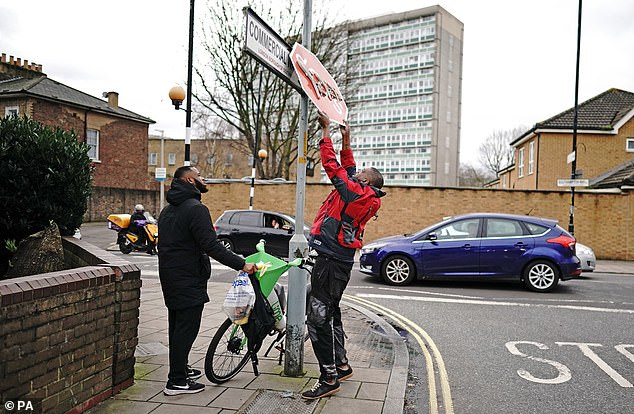



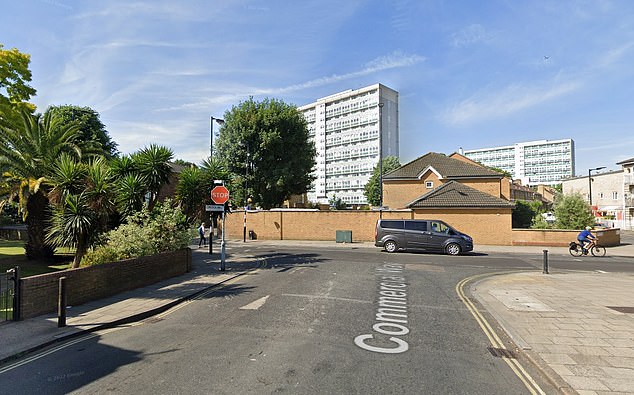
‘However, it’s our view these installations should never be sold and should be preserved and enjoyed by the public, not stolen for a quick profit’
The artist confirmed the artwork – a traffic stop sign covered with three military drones – was his in an Instagram post shortly after midday.
The revelation led to a stream of locals descending on the site and taking photos of the installation on their phones.
But at around 12.30pm, the peaceful scene was shattered by the arrival of two men, one of whom balanced precariously on an Lime e-bike while hurriedly hacking the sign down with bolt cutters.
The rider of the e-bike, who asked to be referred to only as Alex, said he ‘watched in awe’ as the man ‘bashed’ the sign with his hands while balancing on the saddle.
The man removing the sign, who was wearing a red jacket, fled with it after just 60 seconds after onlookers shouted at him to stop. He left the bolt cutters behind.
The extraordinary scenes unfolded at the intersection of Southampton Way and Commercial Way in Peckham close to a zebra crossing.
Banksy’s works have previously sold for millions of pounds at auction. The identity of the men is not known and it’s still unclear exactly who was behind the removal and whether it was a stunt. However, it has been claimed that Banksy was not involved.
The piece has already been valued at £250,000 by art experts – although they added that they believe the works should be left to be enjoyed by the public.
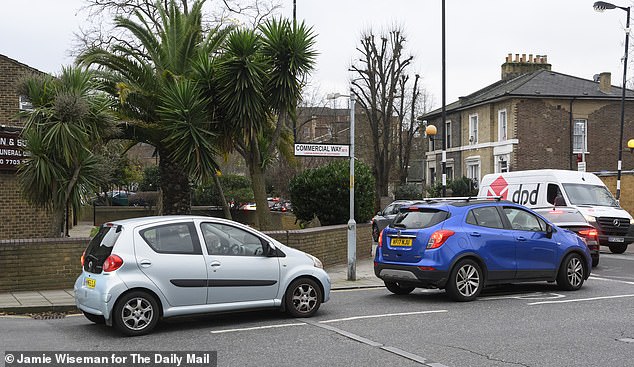

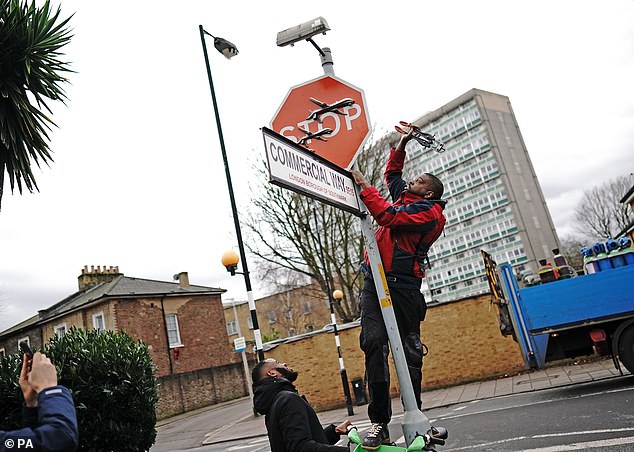
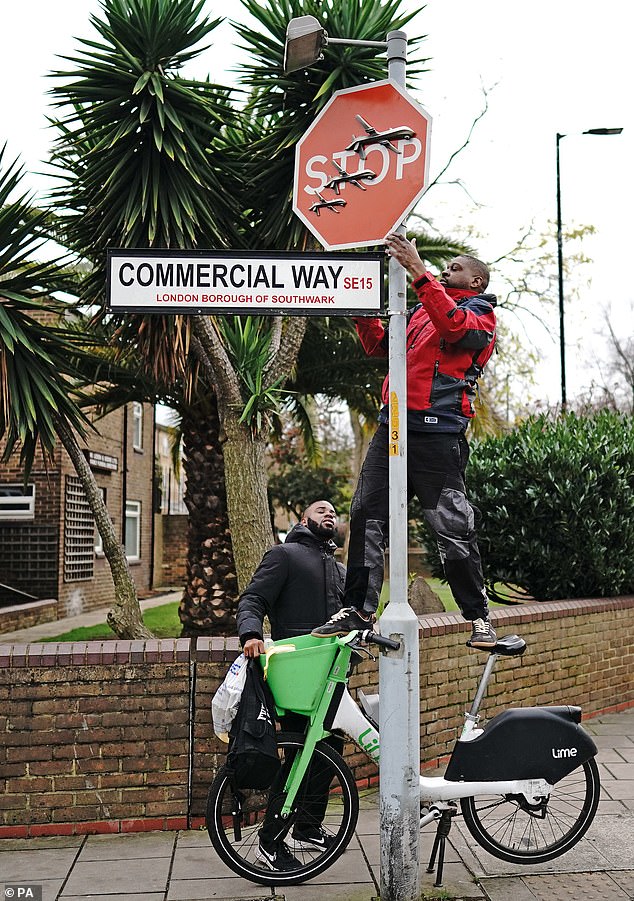
Ed Damon said he spotted Banksy erecting the art work at 7am yesterday – and was later witness to it being stolen.
The 45-year-old was out on an early morning run when he saw a man in his 40s with grey hair standing on a pair of steps at a lamppost on Commercial Way.
He told MailOnline: ‘I thought it was a bit strange but the guy did not hang around. He had some steps up and once it was up, he just ran across the road. I did not see where he went. There were some cars around but not many other people
‘I took a photo to show my friends and thought nothing more. It was only today I heard it was a Banksy, and that man must have been Banksy.
Mr Damon, a civil servant, was returning to his home in Peckham this afternoon when he saw a crowd standing by the sign.
He said: ‘This guy just cut it down and ran off. No one tried to stop him.
‘I don’t think anyone knew it was a Banksy until he posted it on his social media and made it official.
‘It’s a bit surreal to see it go up and then come down.’
Alex, 26, said he had ridden an e-bike to the sign after hearing about it on social media.
He said: ‘I opened Instagram and I saw it was posted four minutes before and I was about to go on my lunch break. There were about two people there when I got there. We were all sort of admiring it and taking pictures.
‘This guy comes up and grabs it, we watched in awe as he bashed it. He put the Lime bike under the sign, stood on the Lime bike and tried to hit the sign, he hit it with his hands and it wasn’t going anywhere.
‘He fell off the Lime bike at one point. He disappeared and went away and about two minutes later he reappeared with bolt cutters and just sort of tried and tried and tried while everyone was watching.
‘We said ‘what are you doing?’ but no one really knew what to do, we sort of just watched it happen. We were all a bit bemused; there was some honking of car horns.
‘He ripped it off and ran across the road and ran away. He said nothing. He didn’t seem to care that much about the art itself.
‘There was someone else there but I don’t know if they were together.
‘I went there thinking that people want that, I wanted to see it before something happened to it. Before it was taken, someone else said ‘shall we take it?”
Banksy has not yet commented on the drama, but had been warned by a social media user: ‘The sign will be snatched pronto.’
The drones on the piece resembled those on another artwork, Civilian Drone Strike, which depicted them destroying a house while a little girl and her dog watch on in horror.
It was sold for £200,000 to raise funds in opposition to a London arms fair.
Onlookers started shouting when a man tried to remove a Banksy installation in south London, a witness said.
They said: ‘He arrived the first time, the bloke, and tried to climb up to the sign and then couldn’t quite knock it, the sign, of its hinges, just with his hand.
‘So then he went away and then came back with a pair of bolt cutters and climbed up on the bike.
‘He fell off the first time. Then his mate steadied the bike and then he climbed back up again and just bashed the sign off the hinges and then ran off.’
He added: ‘As soon as it (the art piece) went up online a few people cycled down to it to see it straight away and just sort of hung around.
‘When he started trying to knock it off a few people were shouting for him to stop but he just carried on and that’s when he realised he couldn’t get it off with just his hands and had to get some bolt cutters.’
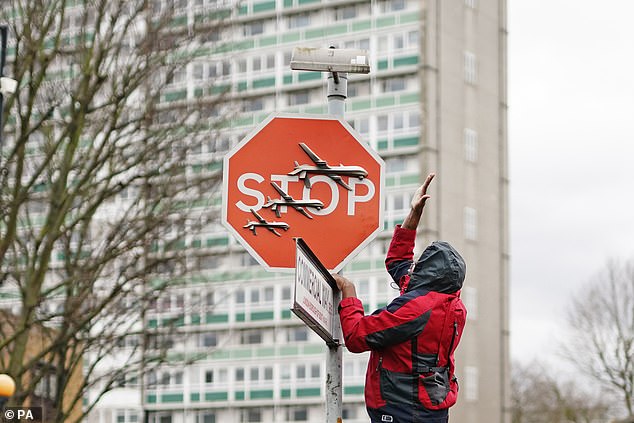

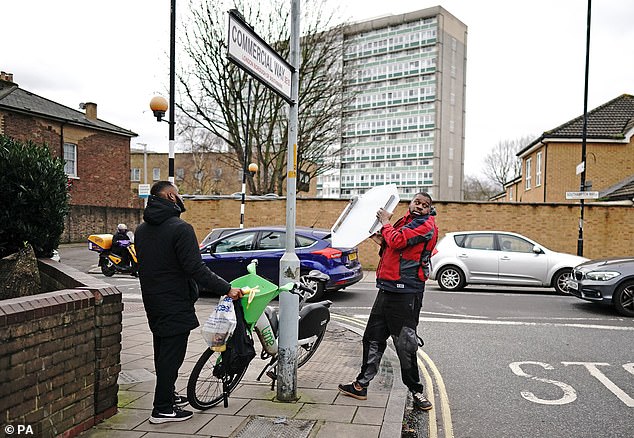

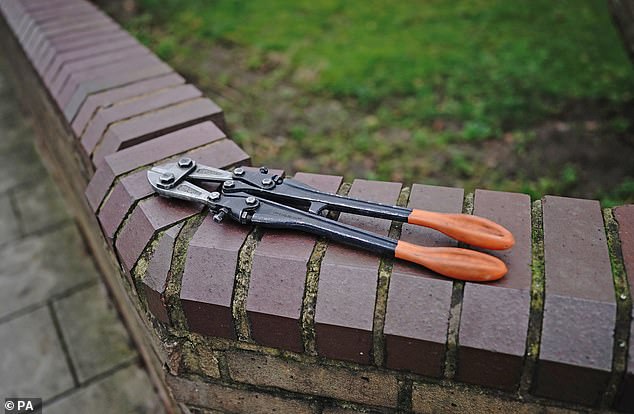
A second witness who saw the removal of a Banksy artwork in south London said it ‘surprised’ him and it would have been ‘nice if it stayed there for a while’.
The man, who wished to remain anonymous, said: ‘I was crossing the road and somebody there said ‘look’ and told me what was happening. There were four or five of us taking pictures of this guy on the bike, this man wanted to get hold of the sign.
‘At one point he went away and he came back with a tool and then he completed the work and went away. Apparently the tool remained there, he left it on the wall.
‘I was surprised to see it, I took a picture of the sign, but I didn’t want to take a picture of the guy.
‘It is strange, these pieces of art are nice, it would be nice if it had stayed there for a while.’
This is not the first time Banksy’s art work has been removed shortly after its creation.
A mural weighing 3.8 tons called Valentine’s Day Mascara appeared on the side of a house in Margate, Kent, on Valentine’s Day this year and was dismantled some hours after Banksy had shared a series of photos of it online.
The mural depicted a 1950s housewife with a swollen eye and missing tooth, wearing an apron and yellow washing-up gloves, and throwing a man into a chest freezer.
At the time the resident of the property where the painting was created, who asked not to be named, said the freezer and other items including a broken garden chair used for the artwork had been removed ‘very quickly’ and put into a truck.
In September the mural was placed in the foyer of The Art of Banksy exhibition in Regent Street, central London, where it can be viewed for free.
The exhibition features pieces including Girl With Balloon, Flower Thrower and Rude Copper and also focuses on Banksy’s Dismaland, The Walled Off Hotel in Bethlehem and recent works acknowledging the ongoing war in Ukraine.
An exhibition also opened at Glasgow’s Gallery of Modern Art (GoMA) this year for a limited run and showcased 25 years of Banksy’s stencil graffiti.
Cut & Run included authentic artefacts, ephemera and the artist’s toilet, as well as a model that explained how the artist shredded Girl With Balloon during an auction at Sotheby’s in London in 2018.
In August, a message on cutandrun.co.uk, said that organisers now ‘want to take this show on the road but have no idea where to go to next’.
The artist often refers to contemporary issues and in 2020 included messages about the Coronavirus pandemic in his work.
Transport for London (TfL) removed spray paint in a London Underground carriage due to what they called their ‘strict anti-graffiti policy’.
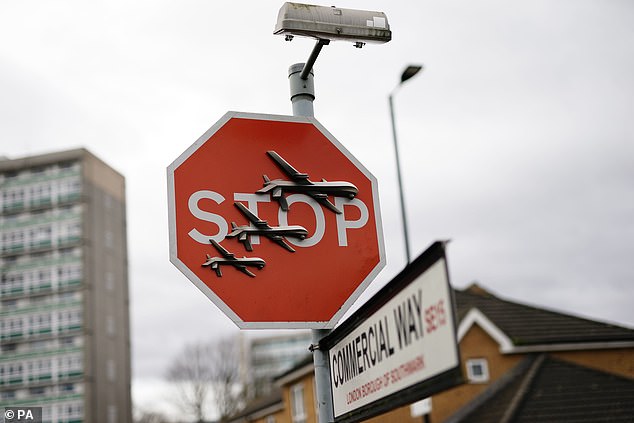
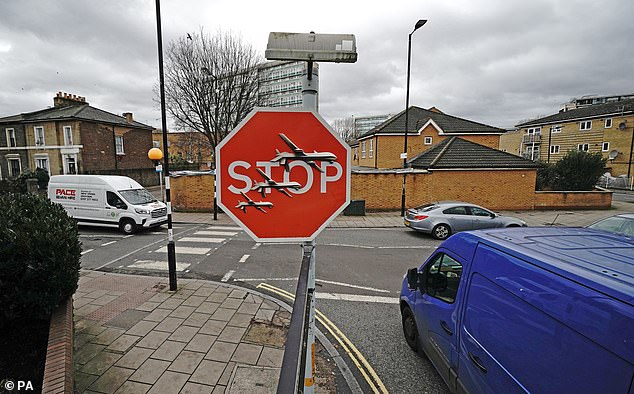

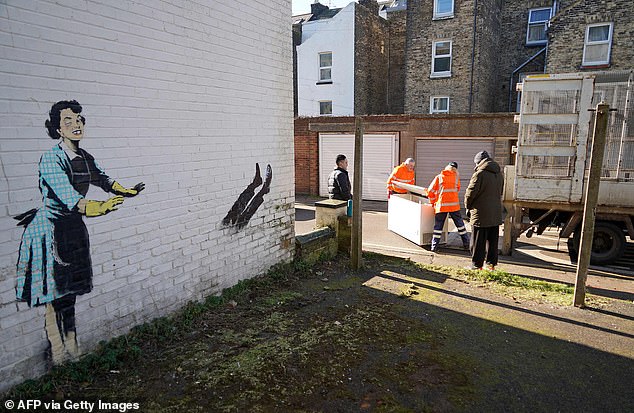
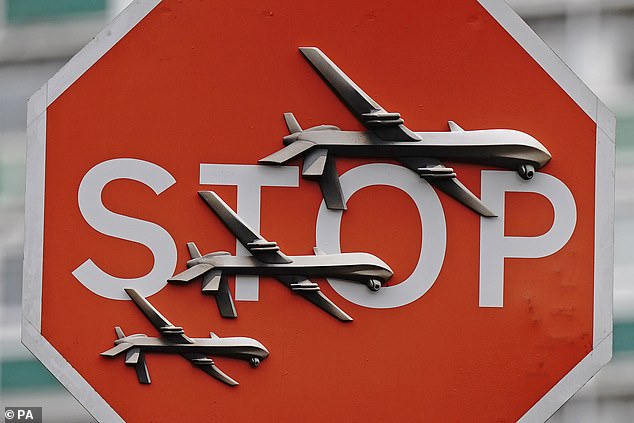
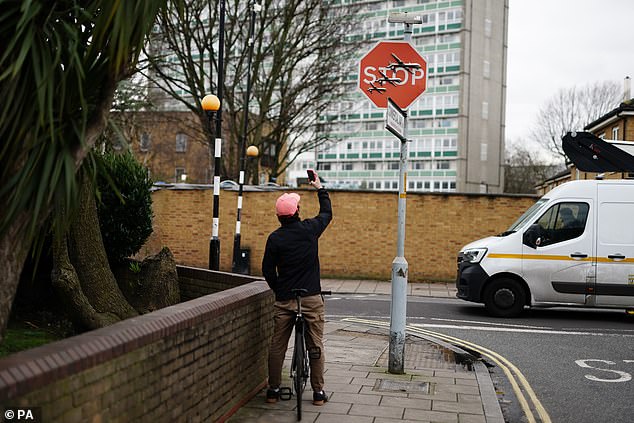

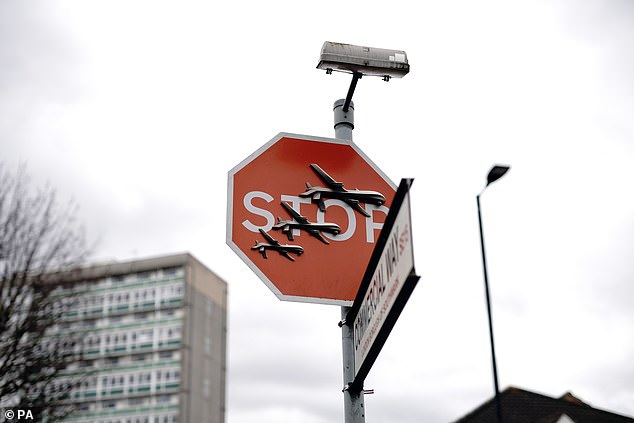
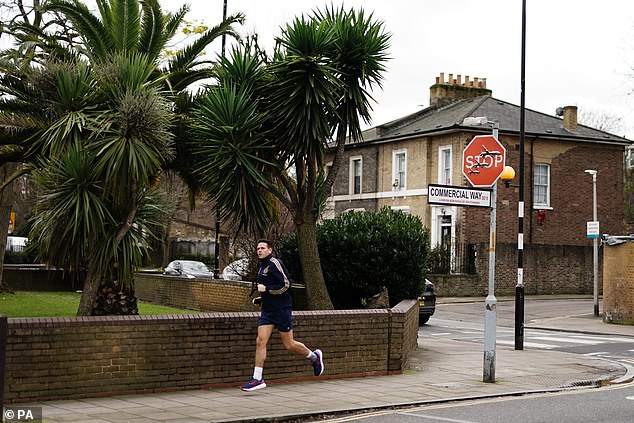
Last month, it emerged a £1million Banksy mural criticising Brexit was partly destroyed after the local council demolished the building it was on to make way for a new £25million regeneration project.
The mural appeared on the side of a building in Dover, Kent, in May 2017 – a year after Britain narrowly voted in a referendum to leave the European Union.
The departure was symbolised by the image of a workman on a ladder chipping away at one of the stars of the EU flag.
Dover District Council (DDC) flattened the building for a regeneration project which included a cultural, educational and business start-up centre, sparking fears for the future of the art work.
But DDC leader Councillor Kevin Mills said that bits of the work, which was mysteriously whitewashed overnight in 2019, had been saved.
Councillor Mills said the image of the man on a ladder and the yellow stars he is working on have been rescued, but not the wider blue background.
He claimed the difficulty was that the image was on the render of the building, which was knocked down by DDS Demolition.
DDS Demolition told MailOnline the building was unsafe and had to come down, but insisted it was carefully taken down rather then a demolition.
Banksy, whose career began in the 90s, is known by millions of people thanks to the appearance of dozens of iconic artworks in unexpected locations around the world, with many having gone on to sell for millions.
For years his identity has been a hot topic, with names such as Massive Attack’s Robert Del Naja and Gorillaz founder Jamie Hewlett being floated around.
Also suggested is public schoolboy Robin Gunningham, who was ‘unmasked’ as Banksy by the Mail On Sunday in 2008 after an investigation into his past.
Regardless of who he his, Banksy’s works are hot property on the art market.
In 2021, his ‘Love is in the Bin’ work was bought for more than £18million, with its value having been boosted after a shredder hidden in its frame cut it to pieces moments after it was sold for the first time in 2018.
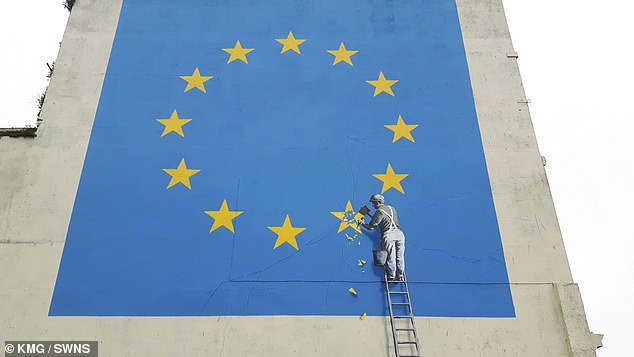

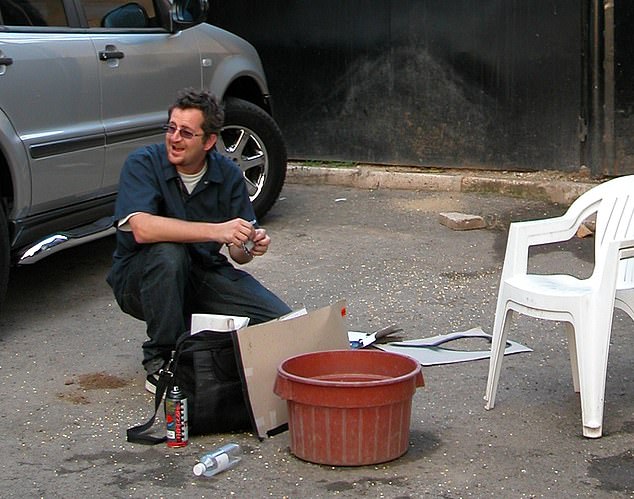
The work, previously known as ‘Girl with Balloon’, was just one of more than a dozen of Banksy’s creations that have sold for more than £2million.
Banksy uses art as a form of activism, regularly making societal and political statements with their works.
The artist was born just outside of Bristol in 1973 and he was a talented illustrator who drew cartoons.
Having also sprayed his tag across Bristol, Banksy then evolved with the times and began creating more sophisticated pieces, whilst always keeping his identity hidden.
One of Banksy’s earliest works is the The Mild Mild West.
The large mural was painted in 1999 in Bristol’s Stokes Croft and shows a teddy bear throwing a Molotov cocktail at three riot police.
It was painted by the artist over three days in broad daylight and is still in the city today, among some of Banksy’s other works.
The exhaustive MoS investigation into Banksy’s identity heard from dozens of friends, former colleagues, enemies, flatmates and even family members.
The search began with an image of a man in Jamaica at work with his stencils and cans of spray paint.
Although Banksy denied the image showed him, the Mail’s investigation was later backed by researchers at Queen Mary University.
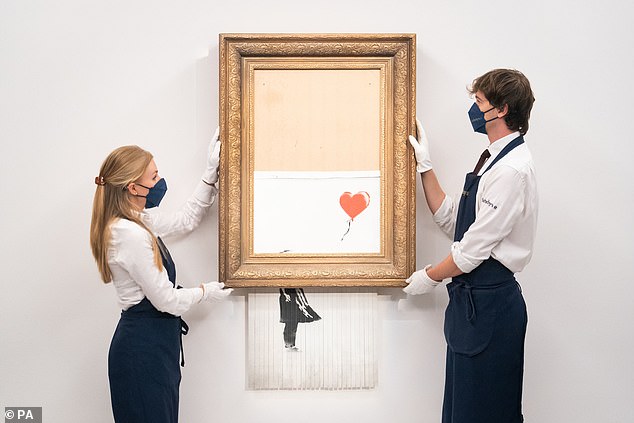
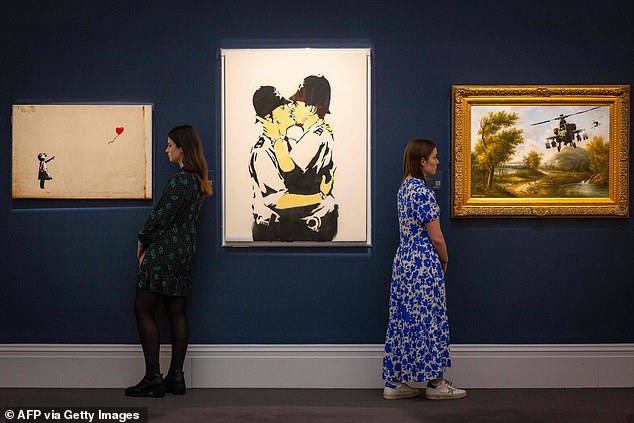
They used ‘geographic profiling’ – a technique more often used to catch criminals or track outbreaks of disease – to plot the locations of 192 of Banksy’s presumed artworks.
The sites indicated ‘hot spots’ which were narrowed down to pinpoint an individual. Peaks within these clusters were found to correlate to a pub, playing fields and residential addresses closely linked to Mr Gunningham and his friends and family.
Mr Gunningham attended Bristol Cathedral School and was born in July 1973. A school photo of him bore a striking resemblance to the man in the Jamaica photograph.
A former school friend described him as being ‘extremely talented’ at art and admitted he would ‘not be at all surprised’ if he was Banksy.
In anonymous interviews he has done, Banksy has said he first became interested in graffiti at school.
And a fellow artist he was living with in Bristol in 1998, Luke Egan, went on to exhibit with Banksy at Santa’s Ghetto, an art store in London’s West End.
However, Mr Gunningham’s family denied that he was Banksy and the link was never explicitly confirmed.
This post was originally published on this site be sure to check out more of their content.

